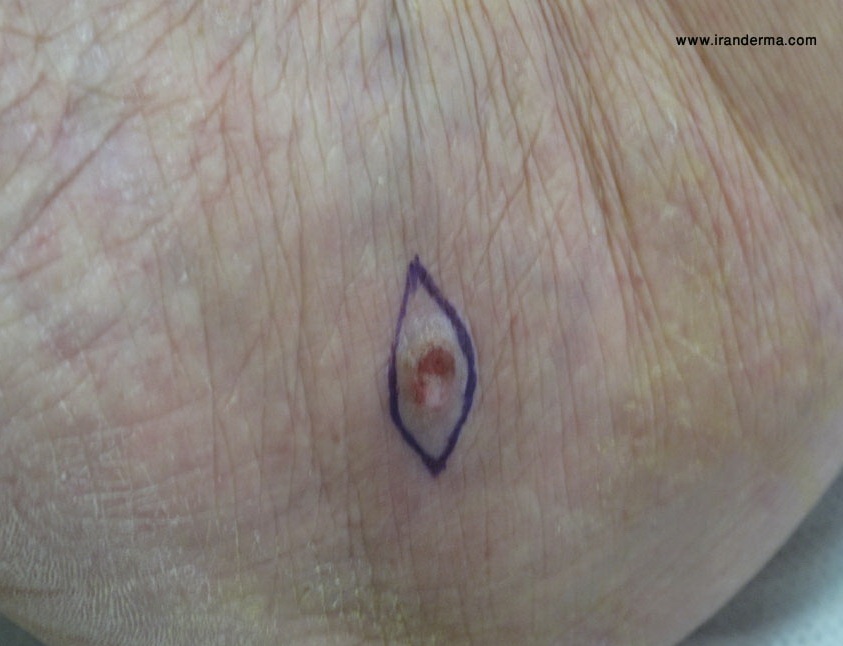IRANDERMA |
|
Quiz: August 2010 |
|
What is your diagnosis for this 85-year-old woman? She has had this solitary tumor on her foot since about 4 years ago. |

Diagnosis: Eccrine Poroma (EP)
Omid Zargari, MD, FAAD:
A poroma is a benign adnexal neoplasm composed of epithelial cells that show tubular differentiation.
Eccrine Poroma, first described by Pinkus et al., usually occurs on the sole of the foot in middle-aged or elderly people as a solitary lesion, but the tumors may occur in clusters (poromatosis). Clinically, It typically present as a sharply demarcated, soft erythematous 2 to 12 mm papule or nodule that may be sessile or pedunculated.
Regarding that the diagnosis is based on specific histopathological criteria surgical excision of the entire lesion is recommended.
ايران درما |
